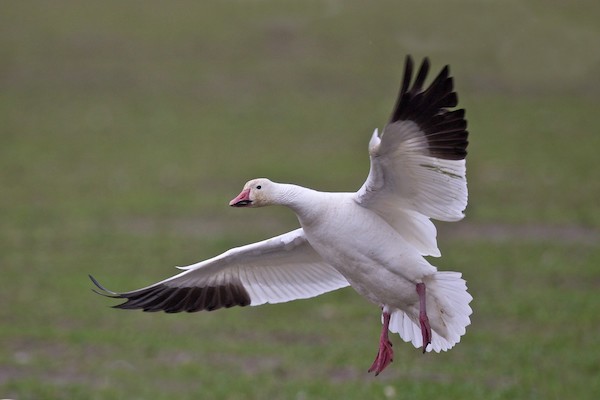
North Sound Avian Flu Outbreak Leads To Advisories
WDFW is advising waterfowlers and others not to move sick or dead geese, ducks or other birds in the North Sound due to a suspected avian influenza outbreak that has killed over 1,150 birds in this important wintering grounds this fall.
The most recent hotspot is Skagit Bay and nearby areas of the Skagit Delta, Camano Island and Port Susan, where some 700 dead birds, mostly young snow geese, have been collected.

It’s a “developing situation that has escalated significantly in the past two weeks,” according to spokesman Chase Gunnell in Mill Creek.
“Our hope is that as sheetwater ice and snow melt around the North Sound, the waterfowl congregated on Skagit Bay will be able to spread out and this hotspot around the bay will dissipate,” he says, adding though that infections are expected to continue through winter to varying degrees.
Ahead of the December 10 goose hunting reopener in Goose Management Area 1, WDFW is advising hunters that geese as well as ducks that appear healthy and are flying around “likely present minimal risk but should be cooked thoroughly before consumption.”
But in the name of reducing the risk of disease transmission, hunters are also being asked to clean their kills with disposable gloves at home instead of the field – where raptors might scavenge on them – and then to double-bag the carcasses and place them in their garbage can. Hands, knives, cleaning surfaces and hunting gear should also be cleaned and disinfected, according to WDFW.
Waterfowlers’ retrievers can also get sick from what’s known as highly pathogenic avian influenza – this strain is HPAI 5 – and so should be kept away from sick or dead birds the dogs may encounter in the marshes.
And those should also be left in place, per WDFW.
“DO NOT attempt to move sick birds to a veterinarian or rehabilitation center, or to your home, as this can spread the disease,” an agency statement out late this morning stressed. “If a dead bird must be moved, it is best to wear disposable gloves while handling it and to double bag and dispose of the carcass in the garbage where pets and scavengers can’t reach it.”

According to WDFW officials, “infected birds may appear lethargic, unable to fly, and exhibit wheezing, vomiting, or have diarrhea or secretions from their mouth or nostrils.”
A November outbreak centered on Whatcom County’s Wiser Lake killed more than 450 geese and ducks.
Dieoffs are occurring elsewhere in the Northwest as well, including at least 350 snow geese and ducks in Idaho south of Boise after unusually large numbers of snows dropped in in late November. And it’s also affecting backyard birds in Oregon as well.
Hunters and others are asked to report sick or dead birds via this WDFW online form.

